A trireme (derived from Latin: “tres remi:” “three-oar;” Greek Τριήρης, literally “three-oarer”) was a type of galley, a Hellenistic-era warship that was used by the ancient maritime civilizations of the Mediterranean, especially the Phoenicians, ancient Greeks and Romans.
History
 The trireme derives its name from its three vertical rows of oars on each side, manned with one man per oar. The early trireme was a development of the penteconter, an ancient warship with a single row of 25 oars on each side, and of the bireme (Greek: διήρης), a warship with two banks of oars, probably of Phoenician origin. As a ship it was fast and agile, and became the dominant warship in the Mediterranean from the 7th to the 4th centuries BC, when they were largely superseded by the larger quadriremes and quinqueremes. Triremes played a vital role in the Persian Wars, the creation of the Athenian maritime empire, and its downfall in the Peloponnesian War.
The trireme derives its name from its three vertical rows of oars on each side, manned with one man per oar. The early trireme was a development of the penteconter, an ancient warship with a single row of 25 oars on each side, and of the bireme (Greek: διήρης), a warship with two banks of oars, probably of Phoenician origin. As a ship it was fast and agile, and became the dominant warship in the Mediterranean from the 7th to the 4th centuries BC, when they were largely superseded by the larger quadriremes and quinqueremes. Triremes played a vital role in the Persian Wars, the creation of the Athenian maritime empire, and its downfall in the Peloponnesian War.
Construction
In English, no differentiation is made between the Greek triērēs and the Latin triremis. This is sometimes a source of confusion, as in other languages these terms refer to different styles of ships. Though the term today is used almost exclusively for ancient warships, modern historians also refer to medieval and early modern galleys with three banks of oars per side as triremes. The rowing arrangement of these differed considerably, though, since knowledge of the multi-level structure of the original triremes was lost some time during Late Antiquity.
Design
 No surviving written source gives complete information on the construction or form of the trireme. Already in the 4th century, the writer Zosimus lamented the loss of the information concerning the trireme’s construction.[9] It is worth noting that with the 1987 construction of Olympias, historians and researchers became aware of how dreadful the conditions aboard triremes truly were. For example, Olympias had to be cleaned every five days due to the stench of 170 rowers’ sweat. Keep in mind that these modern rowers used toilet facilities, presumably unlike the rowers in antiquity
No surviving written source gives complete information on the construction or form of the trireme. Already in the 4th century, the writer Zosimus lamented the loss of the information concerning the trireme’s construction.[9] It is worth noting that with the 1987 construction of Olympias, historians and researchers became aware of how dreadful the conditions aboard triremes truly were. For example, Olympias had to be cleaned every five days due to the stench of 170 rowers’ sweat. Keep in mind that these modern rowers used toilet facilities, presumably unlike the rowers in antiquity
Propulsion and capabilities
The ship’s primary propulsion came from the 170 oars (kōpai), arranged in three rows, with one man per oar. Evidence for this is provided by Thucydides, who records that the Corinthian oarsmen carried “each his oar, cushion (hypersion) and oarloop”. The ship also had two masts, a main (istos megas) and a small foremast (istos akateios), with square sails, while steering was provided by two steering oars at the stern (one at the port side, one to starboard).




